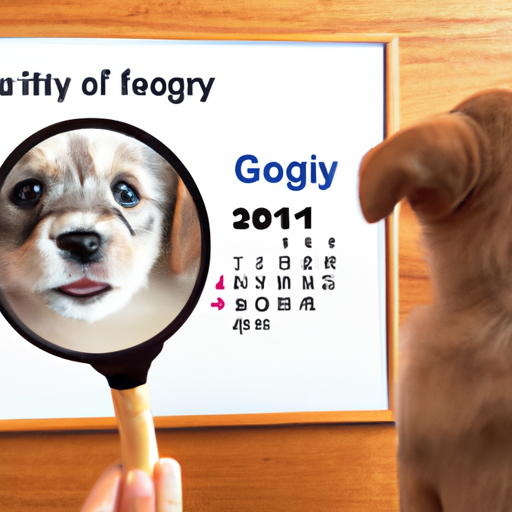As a caregiver, it’s crucial to understand the age of your puppy. Knowing their age can help you provide the best possible care, appropriate to their developmental stage. Today, we’ll guide you on how to tell how old a puppy is.
Understanding Puppy Teeth
One of the first tell-tale signs of a puppy’s age is their teeth.
- 2 to 4 weeks: Puppies are born without teeth. The first set, known as deciduous or milk teeth, start to come in when the puppy is around 2 to 4 weeks old.
- 4 to 6 weeks: By this age, all 28 of the milk teeth should have come in.
- 12 to 16 weeks: Puppies begin to lose their milk teeth, which are replaced by permanent teeth.
However, remember that these timelines can vary slightly between breeds.
Evaluating Puppy Size and Breed
Size can often provide clues to a puppy’s age, but it’s not always accurate because puppies grow at different rates, depending on their breed.
- Small breeds often reach their adult size around 10 to 12 months of age.
- Medium breeds usually finish growing between 12 to 16 months.
- Large breeds can continue to grow up until 24 months.
Observing Physical Changes
Physical changes provide important clues. Here’s a rough guide:
- Newborn: Eyes and ears are closed.
- 2 weeks: Eyes start to open, and they begin to crawl.
- 3 weeks: Ears open, and they start to walk.
- 4 weeks: They start to play with their siblings.
- 6 weeks: Puppies start to look well-coordinated.
Checking the Puppy’s Coat
A puppy’s coat changes as they age.
- Birth to 6 weeks: Puppies are born with a single soft, fluffy coat.
- 6 to 12 weeks: Their coat begins to grow thicker and the color may change.
- 3 to 6 months: The puppy’s fluffy coat is replaced by an adult coat.
Behavioral Clues
Behavior can be indicative of age.
- 2 to 4 weeks: Puppies begin to interact with their environment.
- 5 to 7 weeks: They start to play fight with their siblings.
- 8 to 10 weeks: Puppies have lots of energy and curiosity.
- 3 to 6 months: Puppies might start testing boundaries as part of their learning process.
Consult a Veterinarian
If you’re still uncertain about your puppy’s age, consult a veterinarian. They can provide a more accurate estimate by examining the puppy’s teeth, size, physical development, and overall health.
Why Knowing Your Puppy’s Age is Important
Knowing your puppy’s age is crucial to ensure they’re getting the right care. It helps determine:
- The right food and nutrients they need.
- The appropriate vaccination schedule.
- The right time for training and socialization.
- The proper exercise routine.
Frequently Asked Questions
Let’s answer some common questions about determining a puppy’s age.
Q: Can I tell my puppy’s age by their size?
A: Size can provide clues, but it’s not always accurate as different breeds grow at different rates.
Q: How can a vet determine a puppy’s age?
A: Vets typically examine the puppy’s teeth, size, physical development, and overall health to estimate their age.
Q: Why is it important to know my puppy’s age?
A: Knowing your puppy’s age helps ensure they’re getting the right care, from food and nutrients to vaccinations, training, and exercise.
Q: What are some signs my puppy is getting older?
A: As puppies age, they lose their milk teeth, their coat changes, their size increases, and their behavior matures.
Q: Can I tell my puppy’s age by their behavior?
A: Yes, behavior can be indicative of age, but it’s not always accurate as puppies develop at different rates.
Remember, while these signs and stages can give you a good estimate of your puppy’s age, the most accurate information will come from a veterinarian. Providing the right care at the right time will help your puppy grow into a healthy, happy dog.



